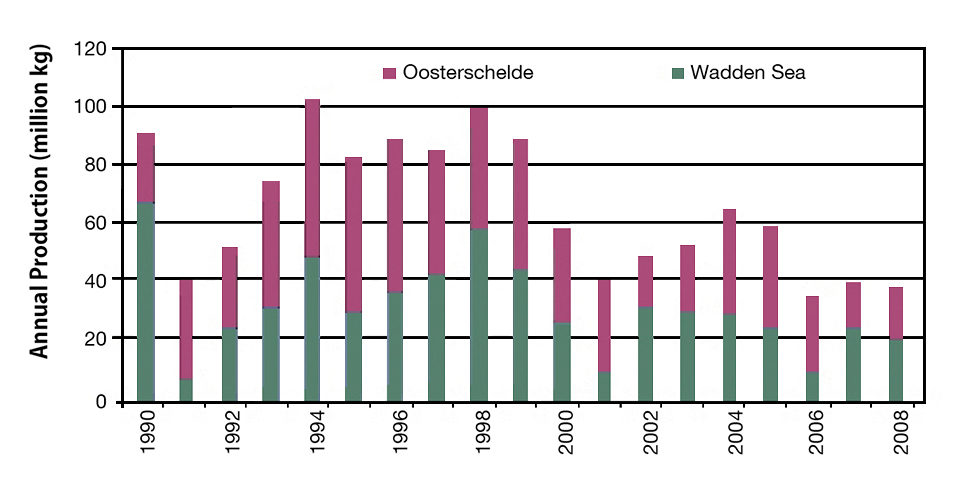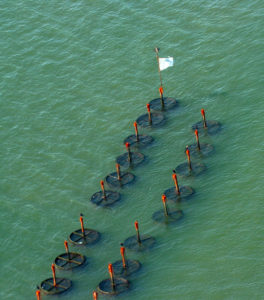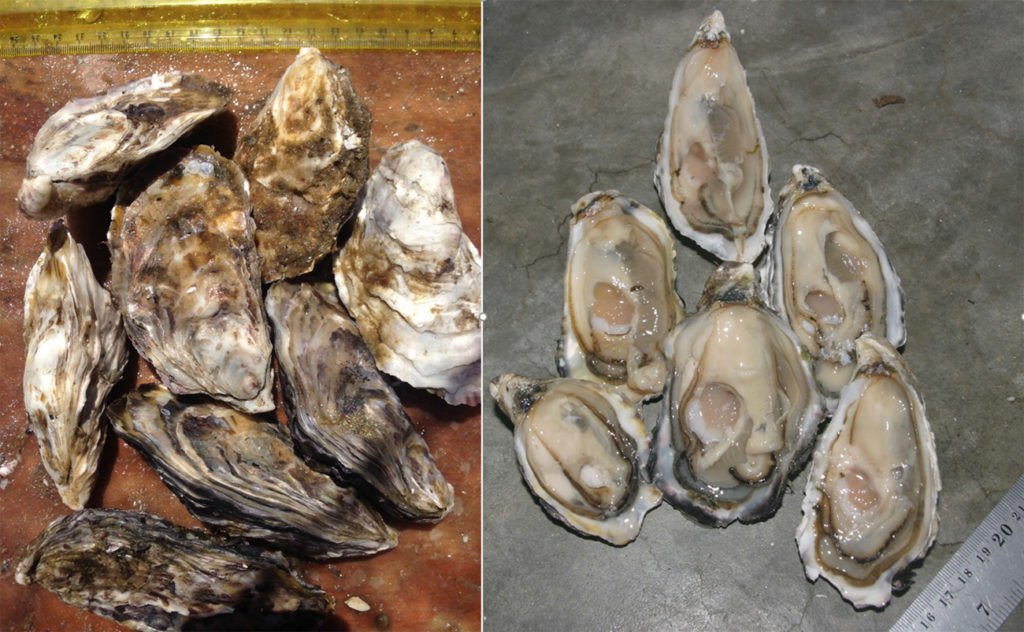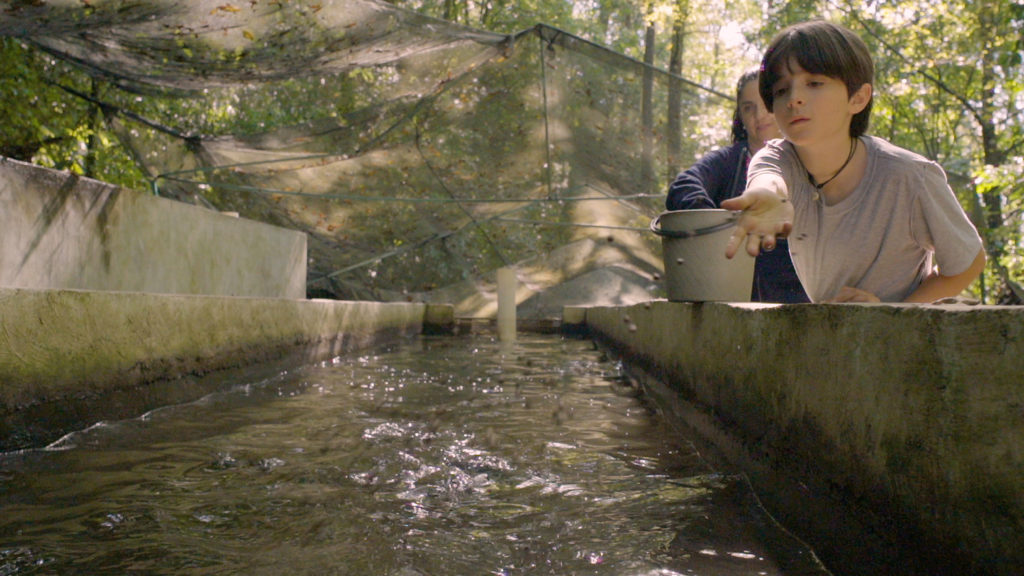Severe weather, predation among the factors limiting availability

Shellfish culture in the Netherlands is mainly based on the production of blue mussels (Mytilus edulis). Traditional bottom culture is carried out on 4,000-hectare (ha) culture plots in the Wadden Sea in the north and 2,250-ha plots in the Oosterschelde, in the southwest. Annual production has decreased from 81,000 metric tons (MT) on average in the 1990s to 47,000 MT in the past eight years (Fig. 1). The average landing values increased from 48 million to 63 million euros (U.S. $61.2 million to $80.3 million) over these periods.
The main reason for declines in annual yields was the lower availability of mussel seed. Mussel seed is traditionally fished from wild beds in the Wadden Sea and transplanted to the culture plots. Natural recruitment should provide sufficient amounts of mussel seed, which is quite high, given the average bottom culture production efficiency of 1.5 to 2.0. For an annual production of 80,000 MT of consumption-size mussels, for example, the seed supply two to three years prior to harvest should be 40,000 to 60,000 MT.

Availability issues

Lower seed availability is due to a decrease in recruitment success ascribed to the absence of severe winters, apparent since the beginning of the 1990s. In severe winters, predators migrate to deeper waters and return to the shallow Wadden Sea in late spring.
Under these circumstances, mussel seed has already settled and grown out, and a mismatch between prey and predator allows extensive mussel seed development. Moreover, severe winters induce synchronization in mussel spawning and subsequent settlement, and this massive settlement is less vulnerable to predation. As a consequence of climate change, predator abundance is now higher, and predation decimates mussel seed stocks.
In addition, nature conservation measures in the protected Wadden Sea have resulted in the closure of intertidal mussel beds that were formerly open to seed fishery. Further measures are in preparation to close subtidal seed bed areas to promote mussel bed restoration.
After a period of polarization between mussel farmers and conservationists, and a number of court cases that resulted in a negative decision about fishing permits issued by the government, an agreement has been achieved. The agreement is focused on a stepwise reduction of bottom seed fishery and subsequent development of wild beds. Progress in this reduction depends on successful exploitation of alternative seed supplies.
Potential solutions include the importation of mussel seed from elsewhere, the production of seed in hatchery/nursery systems and the use of mussel seed collectors.
Seed collection
For a number of years, experiments have been conducted to collect mussel seed by using suspended mussel seed collectors. Substrates in the forms of ropes and nets are deployed in the water column for the summer period, and natural settlement of mussel larvae provides considerable amounts of mussel seed on the substrates. Harvesting can be done several times in succession, producing seed mussels of 4- to 7-kg weight and 10- to 25-mm size per meter of rope.
A variety of collector systems is being tested. Most systems consist of nets of various mesh sizes with a length of 100 meters and depth of 3 meters. Continuous long lines or systems with dropper lines are also in use. For shallow water, smaller nets are used, but horizontal lines and ropes wound around frames have also been tested.
Various techniques for harvesting and collecting the seed mussels have been developed. In some cases, it was possible to harvest three times over the season. After collection, the mussels were brought to the bottom culture plots. Subsequent survival was quite variable and needs improvement
The seed collection is carried out in major mussel culture areas in the Wadden Sea and Oosterschelde, at some spots in the North Sea coastal zone and in some saline lakes. The first experiments were carried out in 2001. Since government policy allows more experiments, there is a steady increase in the application of seed collectors.
In 2006, about 25 ha were effectively used for collectors. In 2007, this figure was almost 70 ha, and in 2008, 113 ha. Total harvest increased from 1,000 MT in 2006 to 2,000 MT in 2007 and 4,250 MT in 2008. Harvests varied 25-45 MT/ha in 2008. There was great variability between sites and systems.
Evaluation study
An evaluation study commissioned by the Dutch government was conducted by Imares in 2007 to address results so far, as well as environmental impacts. The study showed that it is technically feasible to produce mussel seed in considerable quantities by using seed collectors. Further improvements in techniques and management should make the systems economically feasible.
The evaluation of the environmental impacts of the seed collectors considered food uptake by the small mussels in relation to the carrying capacity of the ecosystem, the effects of biodeposits on the bottom sediment and associated flora and fauna, the possible impacts on birds and sea mammals, garbage from the installations, and visual and landscape effects.
As the experiments so far have been on a relatively small scale, environmental impacts were in most cases not detectable. The evaluation study recommended a monitoring program on the effects of setting up seed collection for the different locations. Major issues are the impacts on carrying capacity, landscape and use of space. The latter is relevant because there are various competing claims on Dutch coastal waters, such as for shrimp fisheries and recreation.
For the year 2009, new permits will be given for experimental applications of seed collectors on existing mussel culture plots that carry no bottom mussels for the time being. The plots are leased by the mussel farmers, hence no other spatial claims apply there. Spontaneous settlement of mussels that fall off the ropes may be an additional seed resource.
Pending policy
Further development depends on policy decisions that are in preparation by the Dutch government. In a policy document to be issued in July, new rules will be set for upscaling in the coming years to an annual production of 10,000 MT. In the framework of the new policy, a monitoring, research and evaluation program will be implemented.
Further upscaling is foreseen for the period until 2020. This is the time frame of the agreement between stakeholders for achieving a sustainable mussel culture in combination with protected natural mussel beds.
(Editor’s Note: This article was originally published in the March/April 2009 print edition of the Global Aquaculture Advocate.)
Now that you've reached the end of the article ...
… please consider supporting GSA’s mission to advance responsible seafood practices through education, advocacy and third-party assurances. The Advocate aims to document the evolution of responsible seafood practices and share the expansive knowledge of our vast network of contributors.
By becoming a Global Seafood Alliance member, you’re ensuring that all of the pre-competitive work we do through member benefits, resources and events can continue. Individual membership costs just $50 a year.
Not a GSA member? Join us.
Author
-
Dr. Aad Smaal
Wageningen IMARES
Postbus 77 4400AB
Yerseke, The Netherlands[108,110,46,114,117,119,64,108,97,97,109,115,46,100,97,97]
Tagged With
Related Posts

Intelligence
An emerging shellfish farming industry in Namibia
For shellfish farming in Namibia to continue expanding, industry must better comply with approved sanitation standards. The Namibian Shellfish Monitoring and Sanitation Program, currently in development, will help.

Responsibility
A look at integrated multi-trophic aquaculture
In integrated multi-trophic aquaculture, farmers combine the cultivation of fed species such as finfish or shrimp with extractive seaweeds, aquatic plants and shellfish and other invertebrates that recapture organic and inorganic particulate nutrients for their growth.

Aquafeeds
A look at phospholipids in aquafeeds
Phospholipids are the major constituents of cell membranes and are vital to the normal function of every cell and organ. The inclusion of phospholipids in aquafeeds ensures increased growth, better survival and stress resistance, and prevention of skeletal deformities of larval and juvenile stages of fish and shellfish species.

Intelligence
A motive, and a market, for farmed fish in Mexico
Boasting ample areas for aquaculture and a robust domestic demand for seafood – not to mention its close proximity to the U.S. market – a land of opportunity lies in Mexico. Fish farming is primed to meet its potential south of the border.


